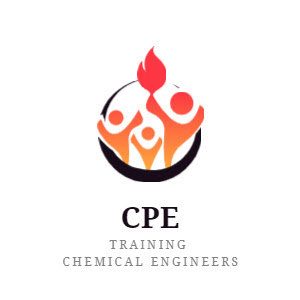Hii all ...!!!
Back after some days, hope everyone is fine and safe from Covid - 19.
Here today i thought of discussing some of my thoughts against a query i.e., Handling of FBD & Risks involved and their Mitigation plans.
Basically, everyone is well aware of FBD, which works on the principle of direct contact drying and fluidisation. But there lies some hidden hazards which need to be listed out against our material properties before proceeding for drying.
The advantage in FBD is direct contact heating where the heat transfer will be direct from air to material and also it will act as a humidification process, where the solvent present in the material requires humidity for getting knocked out.
Anyhow, i'll start my discussion.
Risks Elaboration:
The common problems which we'll face in drying of materials in Pharma industry is the material vulnerability to static and combustibility due to its thermal sensitivity.
The material sensitivity can be expressed in its low MIE (Minimum Ignition Energy), higher resistivity, higher shock sensitivity. These three need to be addressed during drying in any of the equipment.
Coming to working principle of FBD, the drying will happen by blowing off the air from atmosphere into the FBD fluidisation chamber through a series of filters followed by material holding bowl further followed by filter bags (Finger bags). Air is the most common source of static.
Most of the Pharmaceutical materials will be having higher resistivity in the range of 10^10 - 10^13 ohm-m, which makes it difficult to dissipate static. Also there will be slight attrition of particles during fluidisation, which might lead to reduction of particle size. The reduction of particle size during fluidisation will lead to enhancement in surface area, the increase in surface area will make the material vulnerable to accumulation of more static on surface.
However as there will be continuity in FBD, there will be static discharge, but the problem is when there is prolonged drying then the enhancing of surface area will continue and the accumulation will increase, but whereas the static dissipation rate will be the same. This will be a high risk in production, which need to be addressed.
Sometimes the above scenario will be different like, as there is static accumulated on the particle surface the particles will tend to agglomerate and make it difficult to drying i.e., for knocking out the solvent entrapped. To address this we engineer might implement milling of material intermittently, but this will again create an additional risk, as handling/milling the material where there is higher static accumulated will be a suicide note, but this will be invisible to all.
Sometimes there will be some hygroscopic materials which shall be handled in FBD and the relative humidity shall be maintained based on the DVS (Dynamic Vapour Sorption) isotherm. Usually lower RH's are preferred for handling hygroscopic materials as there will be low amount of humidity but in the same scenario, the dissipation rate will be low at lower RH's, which need to be noted while selecting the operating RH range.
This is the most common hidden scenario which happens during drying in FBD. And as an engineer we should be in a position to address it and make it safer to the operators.
Mitigation Plans:
For addressing these, i got a set of mitigation plans which would be helpful and might requires some further fine-tune.
Below are the set of mitigation plans:
1. Discharge / dissipation of of accumulated static before loading and before unloading of material using Electro Static discharge guns, Below is the screen of static discharge gun for reference:
This hand held gun will be having a digital display which would be displaying the staticNote: There will be voltage rating for these guns, which need to be selected based on material resistivity.
2. Arranging Multi-channelling earth monitoring system, which will be displaying the connectivity of earthing to whole system (it depends on where we have arranged earthing), and to make it productive we need to arrange interlock system with the air sucking blower, means if any of the connectivity is broken, then the blower should be turn off. As the blower would be the source for fluidisation, which leads to static gain,
3. The finger bags which would be in use should be anti-static (irrespective of MOC),
4. Continuous RH monitoring shall be done inside the chamber,
5. Static discharge activity shall be done at specified intervals, like if the drying is of prolonged hours, consider it as 10 hours, then for every 3 - 4 hours, there should be relaxation and dissipation using discharge guns (earth rods shall be used in absence of static discharge guns),
6. Ionizers shall be implement in the inlet after filters section to de-ionize and remove the static charges,
7. Extension of thermowell would increase the surface area / contact area, which might be effective in removal of accumulated charges,
8. Finally, my own suggestion is to implement a mesh containing huge perforations (without disturbing the fluidisation activity, below is the top view of mesh
Below is the location for mesh arrangement (subject section is highlighted in red colour):
That's it ..!! Hope everyone would be connect to this.If any of you got more hazards / mitigation explored, pl do comment / message me, so that i can add those to the above listing.
Queries / Comments are most appreciated .....!!!
Is the post helpful to you?
Created with Poll Creator
About The Author








 Hi! I am Ajay Kumar Kalva, owner of this site, a tech geek by passion, and a chemical process engineer by profession, i'm interested in writing articles regarding technology, hacking and pharma technology.
Hi! I am Ajay Kumar Kalva, owner of this site, a tech geek by passion, and a chemical process engineer by profession, i'm interested in writing articles regarding technology, hacking and pharma technology. 
No comments:
Post a Comment